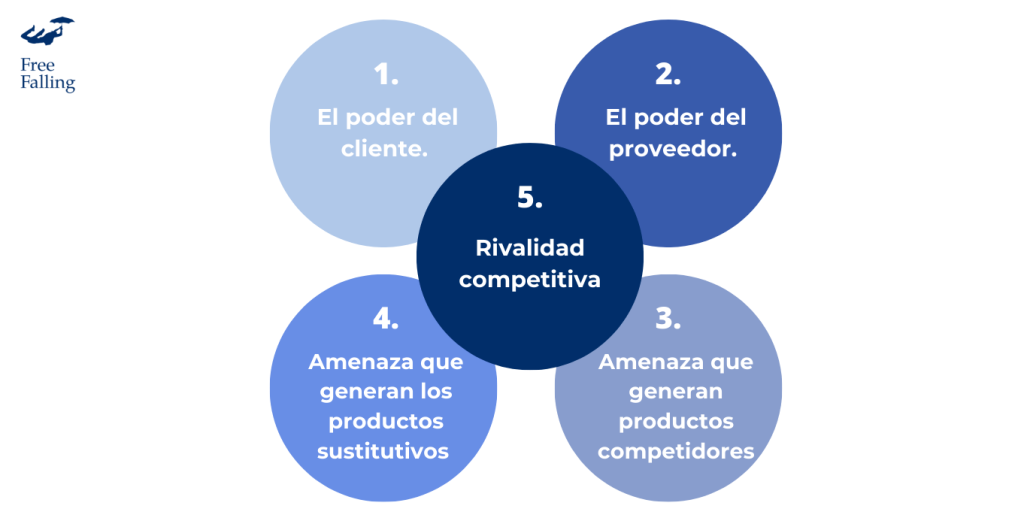Analyze the potential of your business with Porter’s diamond model.
The power of the customer:
The power of the provider:
The new incoming competitors:
The threat posed by substitute products:
The nature of rivalry:

Know the 5 steps to analyze what influence Porter's 5 forces have on your business
These five forces offer companies different points of view to analyze and measure their resources in relation to them and through their analysis you will be able to determine the force that each one has on your company or business.
1. What force my customers exert on my business?
You can calculate the volume of customers you have, as well as your potential customers and the facilities or difficulties you have to increase this number. Another point that you can take into account is to see if your company is capable of increasing production without lowering quality or analyzing the degree of satisfaction of your customers and how likely they would be to switch to a brand from your competition, as well as their sensitivity to when raising and/or lowering the prices of your products or services.
By analyzing these points, focused on your clients, you will be able to get an idea of the power they exert over your project or business.
2. ¿What power do your suppliers have over your company?
Do you need many or few suppliers or could you easily substitute them? The answer to these questions will offer you valuable information about the production of what you offer, what alternatives you would have and what strategic approach you should take regarding this second power.
3. What could be your possible emerging competitors?
What new companies could emerge in your market and become your competition. If you are able to list the possible barriers to entry that exist in your sector, such as whether they meet the requirements to enter your market or define how your business differs from the competition, you have a lot of money.
4. Do you know what products could replace those currently being offered?
Keep in mind that there are alternatives that could pose threats and anticipate the trends of the sector in which you operate.

